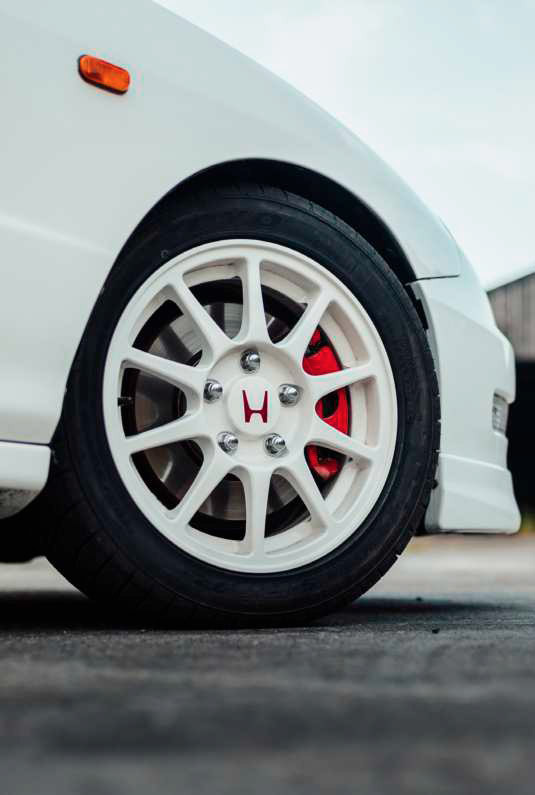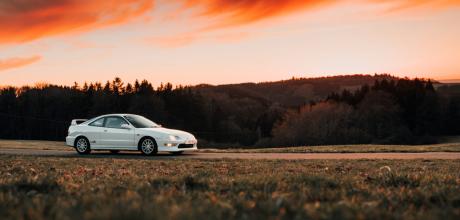1997 Honda Integra Type-R DC2
Welcome to the 90’s — where you could buy a Tamagotchi, supersize your McDonald’s fries, google the worth of your collectible Beanie Baby, pick up a Nirvana CD, and still make it home just in time to watch Friends on NBC. For petrolheads especially, the decade was nothing short of legendary.
WORDS MALIA MURPHY
IMAGES DENNIS NOTEN
For many, regardless of age, the era of the bedroom poster car feels strangely nostalgic, and for good reason. It’s almost as if the print shops couldn’t keep up. One after another the posters rolled off the press, the colors smeared by the eager hands of enthusiasts looking to improve their interior design skills through the implementation of some period correct couture. Still warm, they captured the visages of machines worthy of nothing but the Silver Screen: the Porsche 911 GT1, Mclaren F1, Bugatti EB110, Jaguar XJ-220, Dodge Viper, Mercedes-Benz CLK GTR, Acura NSX, Lamborghini Diablo, and Nissan GT-R Nismo 400R adorned the walls of bedrooms and garages worldwide.
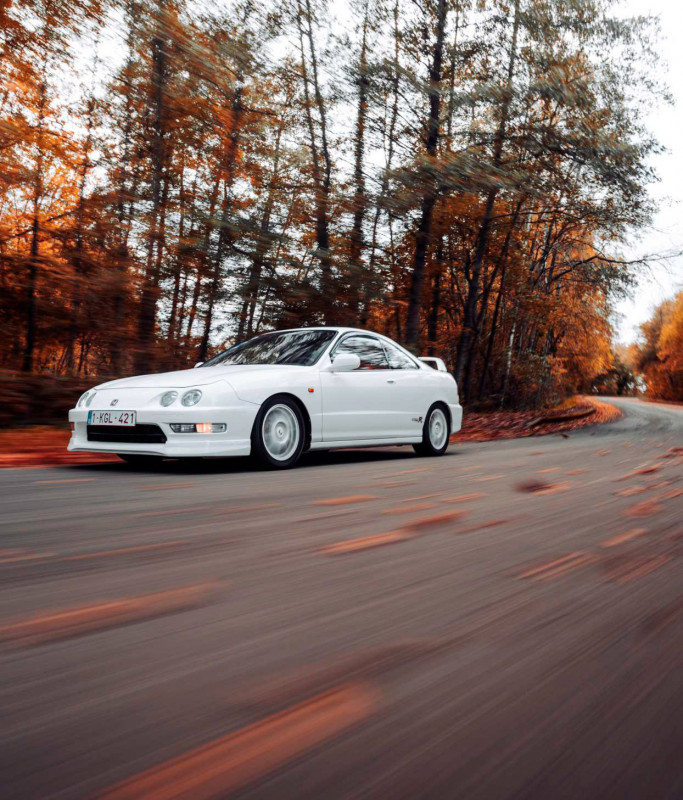
JOURNALISTS THAT WERE LUCKY ENOUGH TO TAKE A LAP BEHIND THE WHEEL REFERENCED THE MOMENT ONLY AS AN EXPERIENCE, RATHER THAN A DRIVE
And while the two-dimensional iterations of these spellbinding supercars were the closest many of us would ever get to attaining the unattainable, at least we had ownership of something that bore their likeness. But then, the gearhead gods had heard our prayers, and recognized our desperation. The 90’s had been called upon to do what it did best—value, power, reliability, and an unbridled driving experience. The outcome? A manifestation of such a unification, the embodiment of what it means to be a player in the game: the Honda Integra Type R.
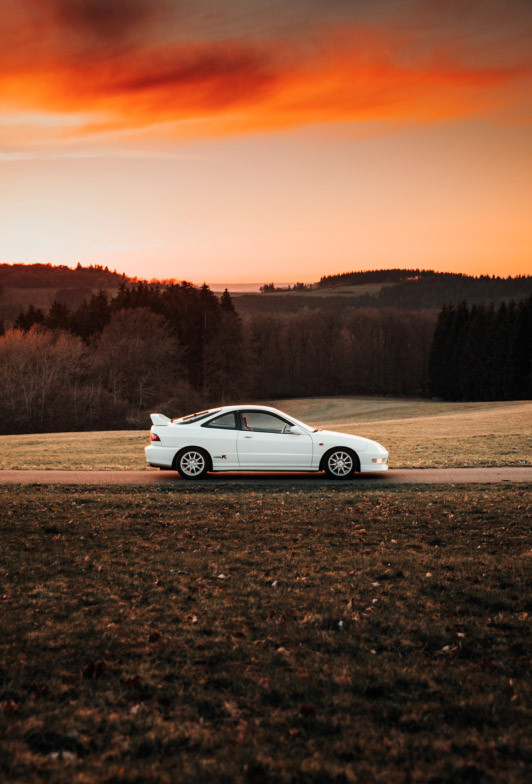
The Japanese outfit didn’t shy away from the extravagance and opulence of their more exclusive competitors, nor did they fear the larger displacement engines of the time, for their mission was different altogether. In the era of do-it-yourself, mechanical masterpieces, finding a “Jack-of-all-Trades” vehicle certainly wasn’t impossible; in fact, the odds were likely in your favor. But where others were plagued by the “master of none” portion of the figure of speech, Honda was focused on the “oftentimes better than master of one” ending of the quote. The Integra Type R would be a generalist and a specialist, an oxymoron on wheels whose superpower was doing everything so great that it did one thing really well: deliver an organic, raw, and unadulterated driving experience.
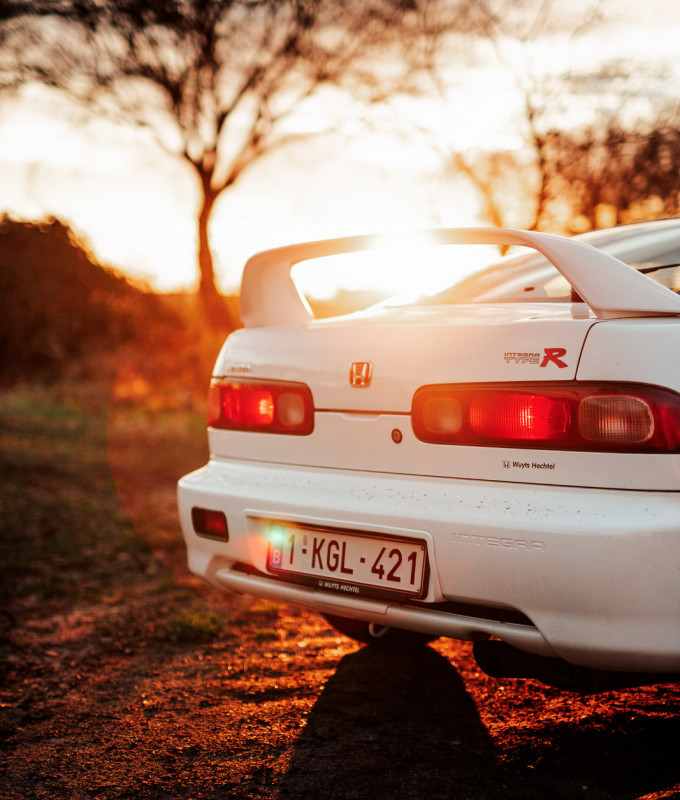
Promulgated and released to Japan in 1995, the Integra Type R was a masterclass in motoring minimalism. It sported the same badge as Honda’s first Formula 1 Grand Prix winner, the RA 272, as well as the automaker’s “R” lineage pioneer, the NSX-R. Honda knew, however, that it needed something for the masses. The goal wasn’t to dilute the performance of their existing supercar, but rather engineer something that was fast enough to get you into trouble, minus the supercar premium (barring a speeding ticket or two). From 1995 to 2001, the DC2 Integra Type R would do just that.
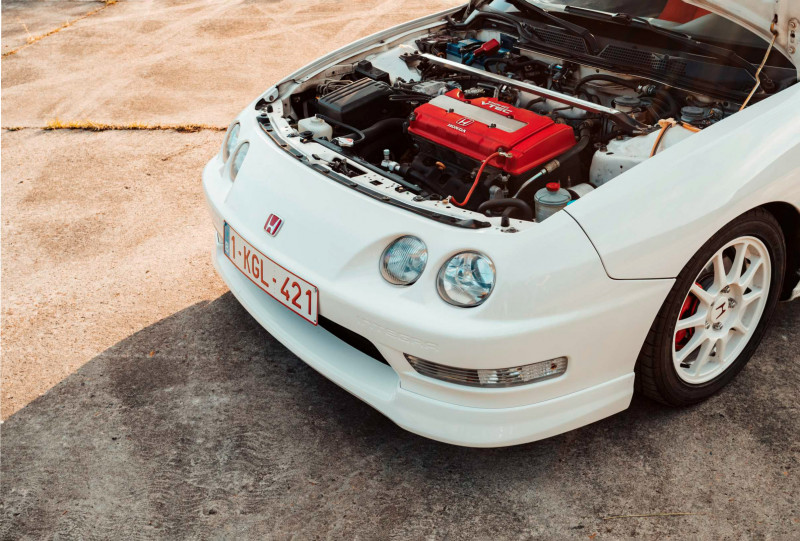
Its 1.8-liter four-banger heart, hand-built with performance pistons and polished ports, was a from-factory tuned variant of Honda’s already successful B18C engine, a small-displacement powerhouse that punched miles above its weight class, thanks to VTEC technology. Motorsport methodology continued to dominate its development—the chassis stiffened, insulation was scrapped, and the rev limiter increased to 8,600 revolutions per minute. A helical, limited-slip differential and double-wishbone suspension afforded the driver with immense grip and reduced understeer. Air-conditioning was nonexistent, as was the radio. You only heard what Honda intended for you to hear: the screeching of the engine (and possibly your own squeals of joy) as you rowed through all five gears.
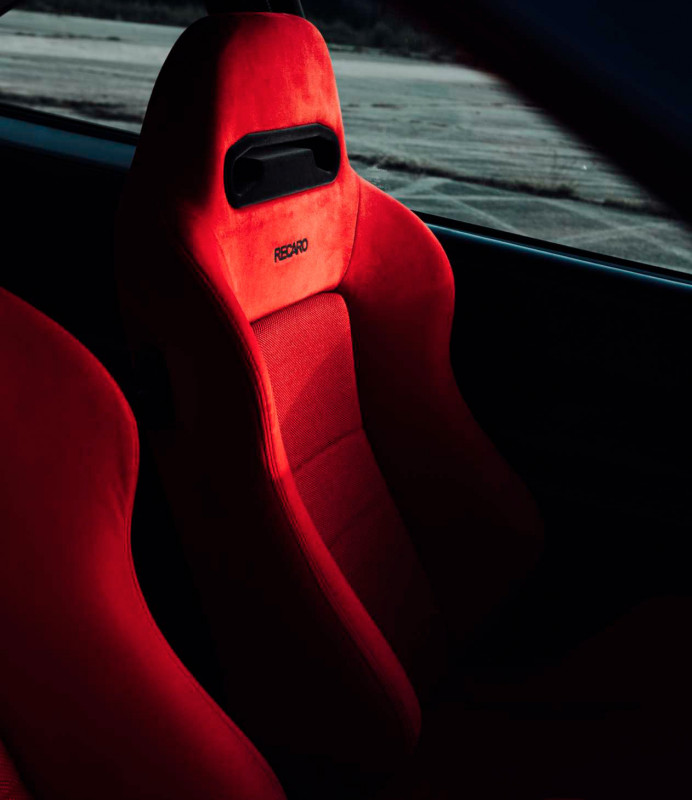
Two years after it saw success overseas, the lively sports coupe would arrive stateside in 1997 as the Acura Integra Type R, cloaked exclusively in Championship White and short a whole two horsepower from the 197-horsepower Japanese version. Though the States wouldn’t see a Type R in 1999, its absence clearly made their heart grow fonder. Growing enthusiasm over the years meant new exterior colors to choose from in 2000, along with previously-nonexistent creature comforts. Attracted to the reliability, performance, and tunability of the Type R, enthusiasts and commuters alike continued to sing its praises. Cameos here and there in pop culture, such as in America’s The Fast and the Furious film and Japan’s Initial D manga series, saw the sports car rocket to stardom, where it continued to build its entertainment presence through appearances in video games like Gran Turismo, converting young players into lifelong gearheads. The birth of online forums and specialized tuner shops only further fueled the community in their quest to share the Integra Type R with the world, and when the world listened, there was no turning back.
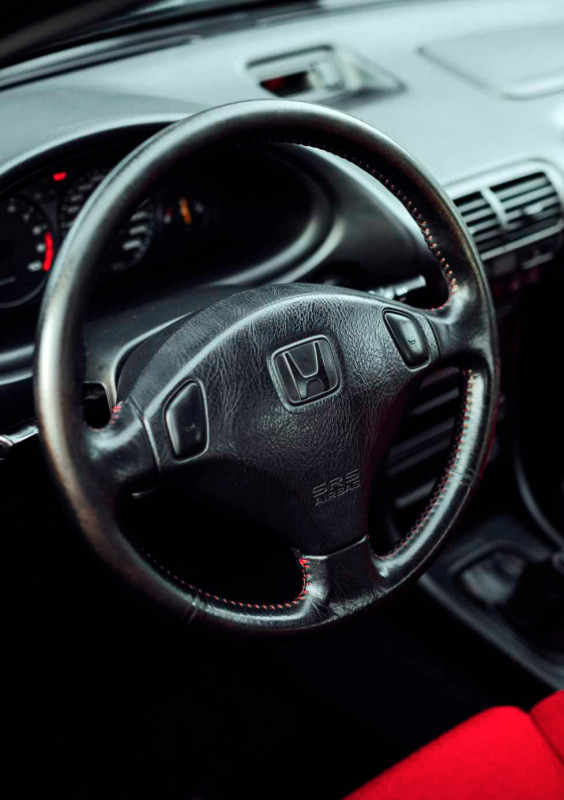
Journalists that were lucky enough to take a lap behind the wheel referenced the moment only as an experience, rather than a drive. It wasn’t particularly f lashy, or fast for that matter, but yet it still had presence, and a soul f it for racing. Thanks to that, there’s no misunderstanding why Honda’s bonafide sports car for the masses has been lauded as one of the best front-wheel- drive cars of all time, and why it demands legendary status. Pair that with the ability to do most of the wrenching yourself, and if you don’t already, you’ll understand why Honda’s second R-line model is deserving of that accolade. Over 34,500 DC2 Integra Type Rs found homes internationally in the 90’s, roughly 2,700 of those with their steering wheel on the left. Unless you were willing to get a visa and live abroad, you would have had to join thousands in pining over the succeeding DC5 generation, which was produced exclusively for the Japanese Domestic Market through 2006. Even admitting that the Integra Type R has ceased production seems wrong, especially when the community is still very much alive. Acknowledging the end of Honda’s second Type R vehicle would be akin to banishing it to the automotive boneyard—a notion that the masses seem to agree on.
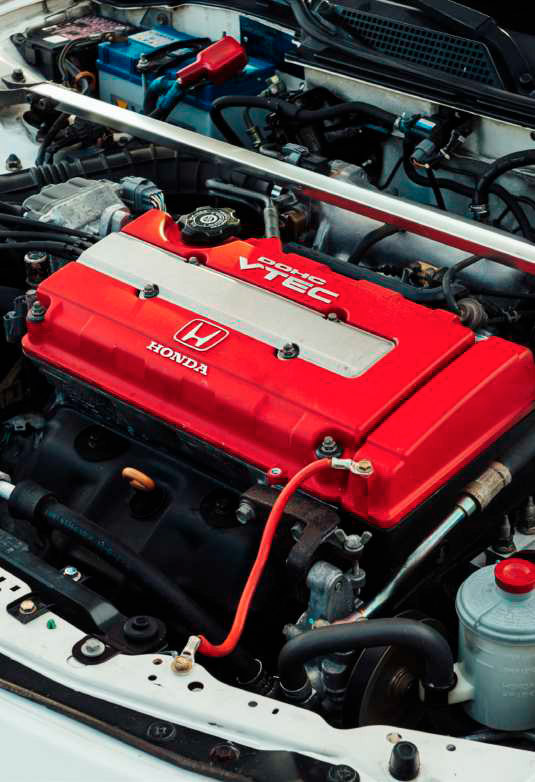
The main indication that the Integra Type R’s cult following is indeed fact and not conjecture is the six digit integer that often follows its name on any auction website. While there’s certainly demand, supply is another story entirely. Perhaps dwindling numbers of pristine examples are partly due to the allure, or maybe it’s simplicity that we’re all after. No more driving aids, digital distractions, or cluttered computers. Analog enjoyment is to the Type R what “happy little trees” are to Bob Ross’ paintings—essential. One is synonymous with the other, and together they are symbiotic.
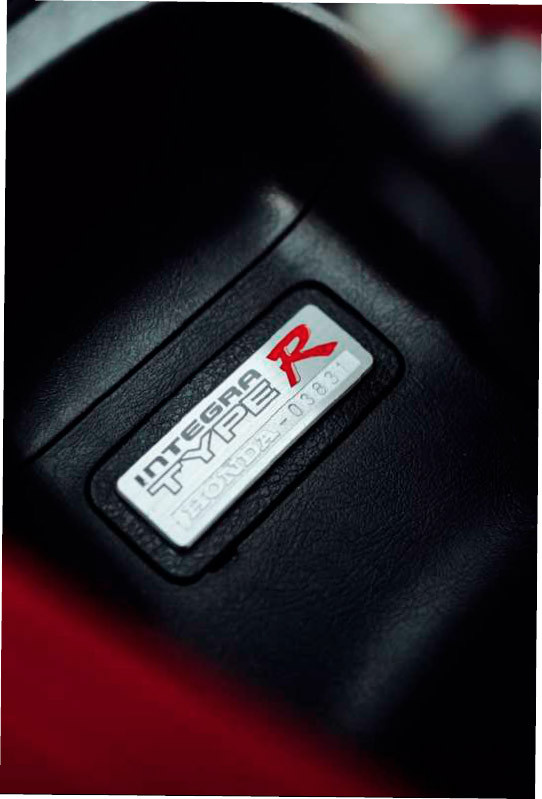
PROMULGATED AND RELEASED TO JAPAN IN 1995, THE INTEGRA TYPE R WAS A MASTERCLASS IN MOTORING MINIMALISM.

THE MAIN INDICATION THAT THE INTEGRA TYPE R’S CULT FOLLOWING IS INDEED FACT AND NOT CONJECTURE IS THE SIX DIGIT INTEGER THAT OFTEN FOLLOWS ITS NAME ON ANY AUCTION WEBSITE.
